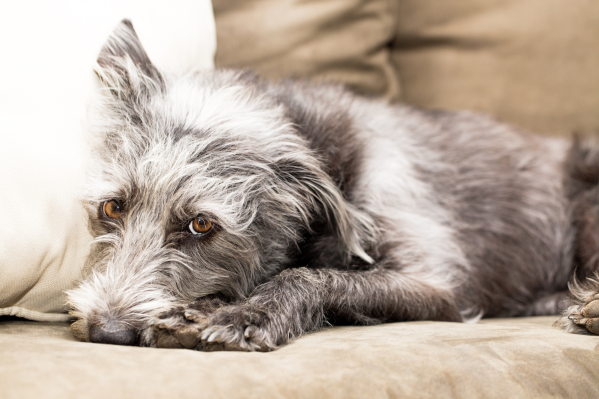Urinary incontinence—or the loss of voluntary control over urination—is relatively common in dogs, especially as they age.
The condition tends to be a problem in mostly older- to middle-aged spayed female dogs. This is because it is hormonal in nature, marked by a lack of estrogen. There are, however, a few other rare causes of incontinence, like urethral calculi or prostate problems in intact males.
We'll review the diagnoses and treatment of the condition, as well as some homeopathic remedies.
Signs of urinary incontinence in dogs
If you notice any of the following symptoms, your dog may be suffering from urinary incontinence:
Leaking or dribbling urine
Wet fur or skin irritation
Accidents in the house
Wet fur or skin irritation near the genital area
Frequent licking of the genital area
Increased urination
How is urinary incontinence diagnosed?
Hormonal urinary incontinence is diagnosed by exclusion. What that means is we rule out everything else and then are left with incontinence as the diagnosis.
For example: If your dog comes into the vet and is a spayed female over 7 years old and is dripping urine in their sleep, potential diagnoses that may cross the vet's mind are infection, incontinence, or arthritis. The causes are then narrowed down by taking a health history, asking about lameness, medications, supplements, or any other vitamins the dog is taking. From there, the most likely tests that are going to be run are a blood profile, CBC (Complete Blood Count), urinalysis, and possibly a radiograph to look for calculi (stones) in the bladder. If all of those tests come back normal, then your pet is most likely incontinent.
The other type of incontinence we see is from intact male dogs who are typically middle aged or older. The reason they become incontinent is due to the prostate being enlarged. When they go out to pee, some urine will pool in the prostate, and when they sleep or lay down, it will drip out of the prostatic urethra. The only treatment for this to get your male dog neutered. Once the hormones are gone, the prostate will shrink and the incontinence will stop. It may take 60 to 90 days, but it will work.
Rarely, we see urinary incontinence due to stones in the urethra, occurring mostly in male dogs. This is caused by a stone forming in the bladder from infection or diet. The stones are small enough that they get stuck in the urethra normally around the os penis (a small bone in the penis). The treatment for this is surgical removal. It's a relatively easy surgery—a small incision is made in the urethra to remove the stones and is then sutured back up. Your dog will have a catheter in place to allow the incision to heal for 3 to 5 days.
How is urinary incontinence treated?
Treatment for the most common type of urinary incontinence is done through two different medications—it all depends on which medication your veterinarian uses.
In practices I have worked in, I have used both Proin and Incurin. Proin is phenylpropanolamine, which was previously used as a diet drug for humans. It works as a sympathetic nervous system stimulant. This tightens the muscle around the neck of the bladder and will eliminate the incontinence. At certain doses, Proin is considered off label, and if that's the case, your vet will explain any implications it may have for potential side effects.
The other medication used to treat urinary incontinence in dogs is Incurin, which is a synthetic estrogen medication. This is started at a loading dose of twice daily and weaned down over weeks to months to the lowest effective dose. You may only have to give this drug weekly if you are lucky, however, most pet parents have to give it at least every 48 hours. Incurin is safe and highly effective.
There are also some homeopathic remedies that veterinarians choose to use, including injecting ozone in the bladder, VetriScience urinary strength UT, Chinese herbs, cranberry tablets, and acupuncture, which have been shown to be effective in this situation.
It's important to follow what your veterinarian recommends to treat your dog's urinary incontinence. The good thing is that incontinence is easy to diagnose and treat. While it's still quite prevalent, it is becoming less common as pet parents wait a little longer to spay puppies. And while it is a side effect of a dog getting spayed, the risks that come with not being spayed far outweigh the possibility of dealing with incontinence.
If your dog is showing signs of urinary incontinence, reach out to the team at Pawp and we can help point you in the right direction.
